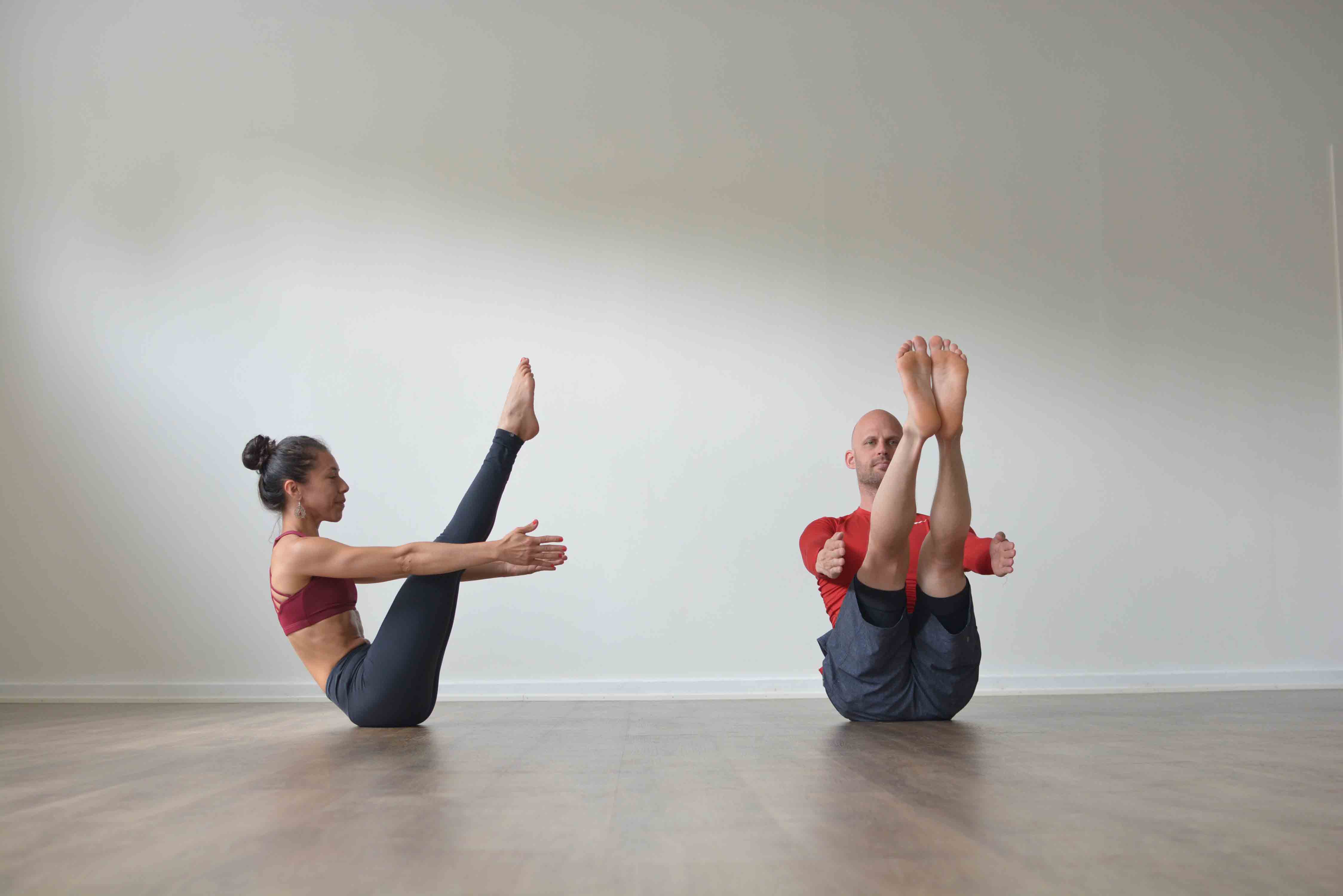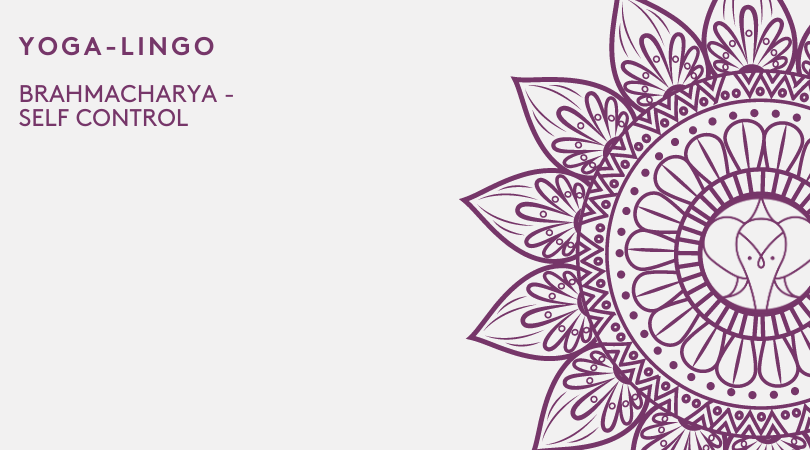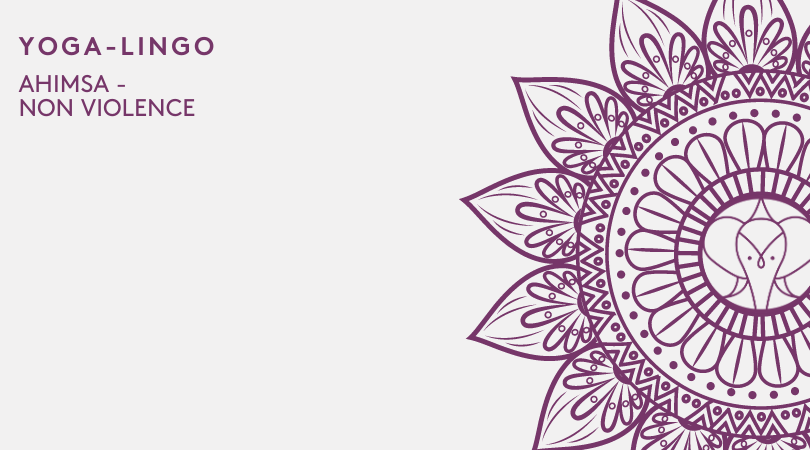Hip Flexor / Psoas and Yoga
Introduction to psoas and yoga
"Psoas" is Greek for "muscle of loin." The psoas consists of three muscles, namely:
- The psoas major
- The psoas minor, and
- The iliacus
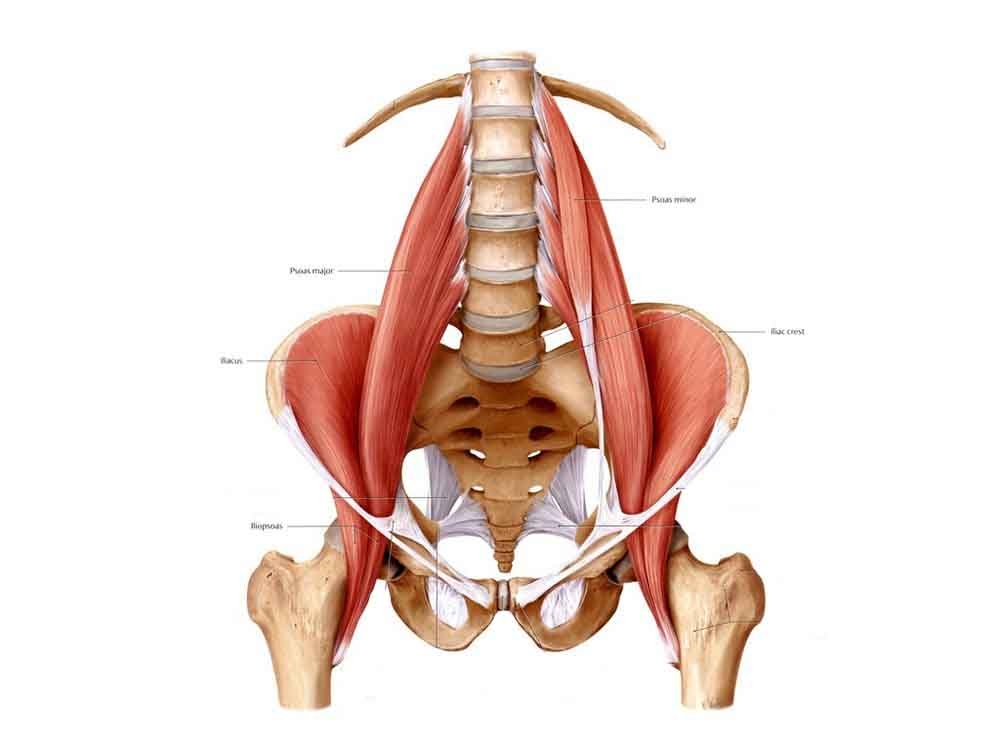
The psoas major is the largest of these muscles, and the psoas minor is the smallest. Interestingly, around half the population doesn't have a psoas minor. When paired with the iliacus, the psoas is often referred to as the "iliopsoas."
The psoas connects the spine to the legs and plays an integral role in supporting the proper alignment of your spine and has little to do with your hips. This muscle enables you to maintain an appropriate posture; if its functionality is impaired, you may experience back pain or discomfort.
Many yoga practitioners think of the psoas as a hip flexor because when the muscle contracts, it brings the thigh and pelvis closer together, which makes specific yoga postures and other physical activities like walking possible.
The Psoas Muscle: Anatomical Description
The psoas major is a paired muscle, as you have one on each side. Furthermore, the psoas major is the skeletal muscle in your body with the deepest location. The psoas major muscle originates at the last vertebra (T12) of your thoracic spine (close to the lower back) and is attached to all the lumbar vertebrae through to L4 and also connects to the diaphragm.
Then, the psoas major comes in contact with the iliacus, continues down the front of the spine, and crosses the front of the pelvis. Together, the psoas and iliacus attach at the lesser trochanter of the femur (the inner edge of your thigh bone).
This grouping of the psoas major and iliacus is often referred to as iliopsoases. The function of the iliopsoas is to flex and rotate the hip joint.
The psoas is attached to the spine and inner thigh and connects the upper and lower body. As a result, this muscle is relatively complex, and because of its location, it is an integral component of the body's "core." The psoas muscle correlates with the body's center of gravity, stabilizes the body, and affects movement.
Psoas Muscle Pain
Psoas muscle pain is typically the result of overuse or physical stress. For example, if you sit for long periods in a car or a lecture hall or participate in sports like running or cycling long distances, you may start suffering from psoas syndrome or overuse.
Psoas overuse can result in several symptoms. The most common symptom is pain that you feel directly at the iliopsoas. Your lower back or upper leg may also ache when your psoas muscle is stressed.
In the cases of severe strain or a level of force, you may also experience a tear. There are three psoas tear grades:
- Grade 1 is a small tear typically associated with pain, but the muscle remains fully functional.
- Grade 2 tears are large enough to cause a degree of muscle loss.
- Grade 3 tears are when the muscle fibers tear, and the muscle loses significant functionality.
If you suffer from psoas muscle pain, your best option may be to refrain from straining activity and to assume a comfortable position so that the muscle can rest. In the case of Grade 2 and 3 tears, you may have to seek treatment from a qualified healthcare provider.
The Psoas and Anxiety
Ida Rolf referred to the psoas muscle as the "seat of the soul." You may be surprised to learn that fear, anxiety, and depression are not in your head but near your buttocks.
As we mentioned above, the psoas muscle is part of your core and stabilizes your body. This muscle is close to your hip bone and significantly influences your movements, balance, and flexibility.
In addition to enabling balanced movement, according to recent studies, this muscle can also affect your emotional well-being. The psoas is connected to the diaphragm at the point where it modulates breathing and where feelings of anxiety are widely believed to originate.
Because of the close integration between the psoas and the spinal cord, the psoas muscle may also be connected to breathing, heart rate, and survival instincts via the reptilian brain, which is considered the oldest part of our brain.
When you're in a stressful situation, the reptilian brain can initiate a fight-or-flight mode which causes the psoas muscles to tighten so that you can quickly run away or take action to defend yourself.
This mechanism works in the opposite as well. If your psoas muscles are chronically tightened, it signals to the body that you are in danger or in a stressful situation, which depletes the adrenal glands and results in adrenal fatigue. Eventually, tightened psoas muscles can compromise your immune system and emotional well-being.
It follows, then, that if your psoas muscles are relaxed, your mind will also be relaxed.
Tight Psoas Exercises
If your psoas muscles are tight, you'll be able to feel it when you do a backbend with your lumbar spine hyperextended. Poses that open up the body's front line are essential for a complete and adequate psoas muscle stretch. Let's look at some of the most effective tight psoas muscle exercises.
Low Lunge
Start with the Downward-Facing Dog pose. While exhaling, step forward with your foot and place it between your hands.
Then, lower your back knee to the ground, and place the top of your back foot on the mat so that your heel is facing upwards. Ensure that your front knee is over your ankle and your back knee is under your hip or slightly behind it. Then, lift your torso, tuck your tailbone, and draw your navel towards your spine.
As you exhale, allow your pelvis to move forward. You will feel the psoas muscle of your back leg stretching nicely. One of the great things about this pose is that it is easy to do for beginners.
Modified Boat
Assume a sitting position with your knees bent and your upper body leaning slightly backward. Be careful not to hunch your shoulders or pull them forward. Then, lift one of your legs and flex the foot in the air backward.
Your calf should be parallel to the floor, and you can support your leg in the air by holding it with your hands. Next, lift your other leg in precisely the same position so that you are balancing on your sit bone.
Engage your abdominal muscles, but not to the extent that it makes it difficult for you to breathe. Although gravity pulls the weight of the torso to the floor, the contraction of the psoas keeps the spine straight. This pose is ideal for strengthening your psoas.
Bridge Pose
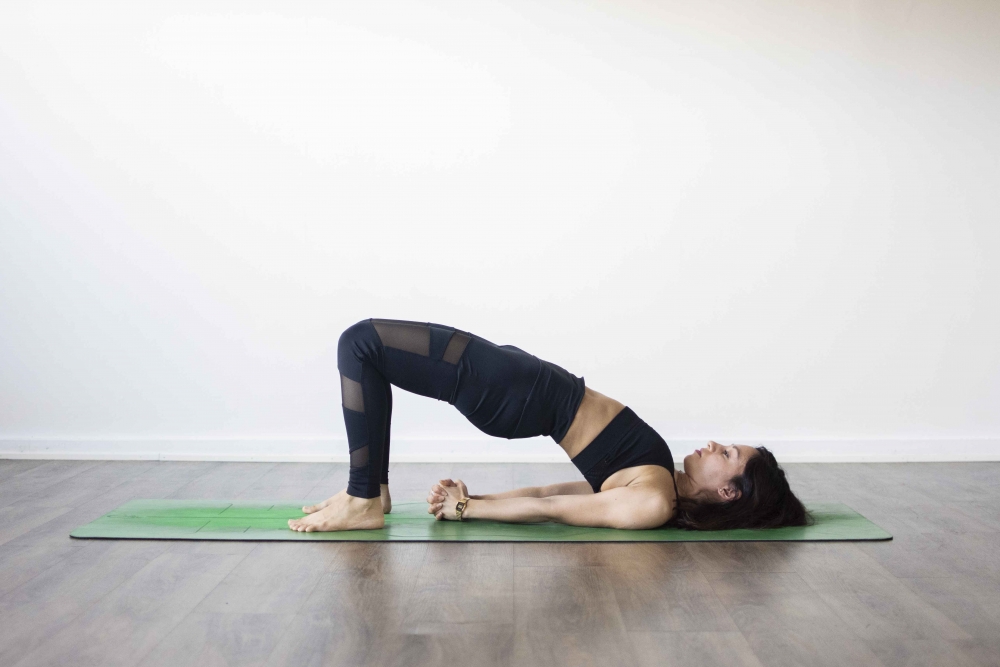
Lay on your back with your feet flat on the floor, width-hip apart. Pull your feet closer to your thighs. Then, extend your arms along your sides with your palms open before lifting towards the sky.
Tighten your abdominal muscles and lift your hips so your body forms a "bridge." Hold this pose for 10 seconds before lowering yourself back to the floor. As your psoas muscles stretch out, you can increase your body's time in the bridge pose.
This pose stretches your psoas muscles by extending your hips and is just as effective as the low lunge for alleviating psoas strain.
Half Frog Variation
Lay on your back and hug your knee as close as possible to your chest with your other leg extended out flat. Make sure you breathe comfortably before dropping the knee closest to your chest and twisting it over your extended leg. Then roll over to your side until your two legs form a 90-degree angle.
Flip over to your belly with your arms extended and raise yourself on your forearms with your elbows at 90-degree angles. Then, roll your shoulders back and lift your chest until you feel your psoas muscles stretching. Keep this pose for 10 to 15 seconds before repeating it on the other side.
Reverse Planks
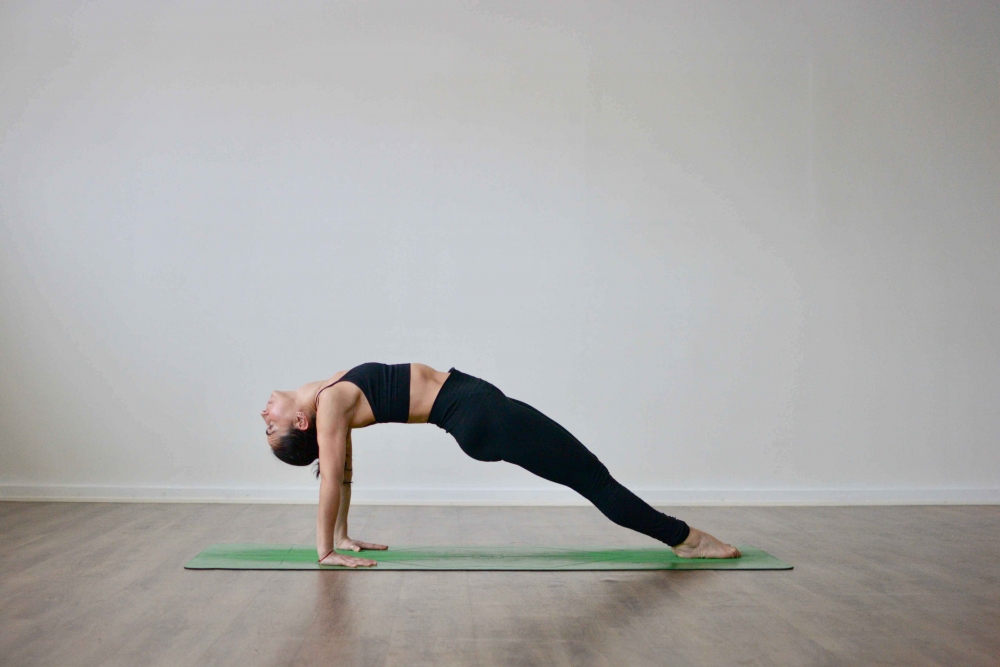
A reverse plank is an excellent exercise to strengthen your psoas muscles.
Sit on the floor, and place your hands behind you and your fingers pointing to your feet. Next, raise your pelvis from the floor until your arms are extended, and your knees are bent at 90-degree angles. Then, spread your legs forward while keeping your hands and arms stable until you feel your psoas muscles working.
Keep this position for anything from thirty seconds to one minute.
Psoas Muscles in Relation to Yin Yoga Practice
Yin Yoga psoas release can be instrumental and pleasant to gain the benefits of strain alleviation and psoas muscle strengthening.
Yin Yoga is a branch of yoga that is not widely familiar. Many experienced yoga practitioners may take some time before understanding Yin Yoga's approach. What makes this type of yoga effective for psoas release is that it targets the body's deep connective tissues and regulates the body's energy flow.
Like the exercises listed above, Yin Yoga typically involves passive poses. There are not many Yin Yoga poses, and this approach is also unique in that it focuses on relaxation while carrying out the posture. Yin Yoga aims to soften the muscles you're targeting and move them closer to the bone.
Deeper access to the body is an essential element of Yin. Since psoas muscles are the deepest skeletal muscles in the body, this is one of the reasons why this form of yoga is helpful, especially since the poses open the hips. When you do Yin Yoga, you can expect to hold a pose for a long time – sometimes up to twenty minutes.
Meditation is another component typically associated with Yin Yoga, especially during a posture.
One key benefit of Yin Yoga is that it improves and maintains flexibility, making it especially suitable for older people. Many people with problems relating to addiction, trauma, or anxiety also found that this slow-paced yoga practice is sufficient to alleviate these issues.
More Ways to Keep Your Psoas Muscles Healthy
Add Support to Your Car Seat
Put a rolled-up towel or pillow underneath your sit bones and behind your lumbar spine, and make sure that you stretch at least once every three hours.
Don't Sit for Long Periods
When you sit down, your hips should be level or slightly higher than your knees. Avoid bucket seats and chairs that don't have lower back supports. Stand up at least once every hour to stretch your muscles.
Tone Down the Extreme Exercising
If you regularly do sit-ups or are a power walker or long-distance runner, make sure that you alternate your workouts.
Get a Massage
Visit a professional massage therapist once in a while and ask them to relieve a tight psoas muscle. In addition to yoga, you can also request a resistance flexibility trainer to help you with your tight psoas muscles.
Constructive Rest
Lay on your back with bent knees and your feet flat on the floor, hip-width apart. Rest your arms over your belly and allow gravity to relieve tension from your psoas muscles for anything from ten to twenty minutes per day.
Conclusion
Psoas muscles form part of your core and are the most important muscles to ensure stability, comfortable movement, and balance. The psoas muscles are also one of the essential muscles as they connect your upper body with your lower body.
In addition to stabilizing your body, the psoas muscles also play a role in your emotional well-being. If your psoas muscles are under strain, it can result in anxiety, depression, and chronic stress.
Yoga, especially Yin Yoga, is incredibly effective in stretching and strengthening your muscles. If you have strained psoas muscles, you should also refrain from sitting for long periods and make sure you take time for muscle stretching in your daily routine.

